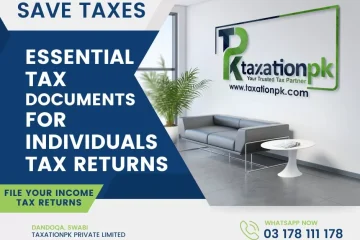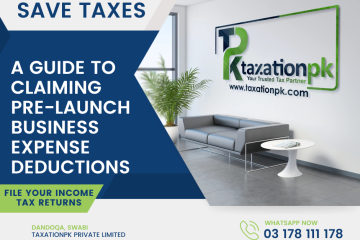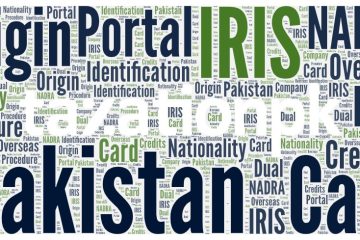Learn how to structure financial statements under Rule 44, categorize expenses, and ensure tax compliance with clear annexures and accurate documentation.
Handling Tax Withholding and Documentation
Accurate handling of tax withholding is crucial for compliance. Key steps include:
- Determine Taxability: For each expense and party, determine if tax withholding is required based on applicable tax laws and regulations.
- Calculate and Deduct: If withholding is required, calculate the correct amount and deduct it at the time of payment.
- Deposit Tax: Remit the withheld tax to the relevant tax authority within the prescribed timeframes.
- Documentation is Key: Maintain thorough documentation for all tax-related activities. This includes:
- Payment Certificates (CPRs or equivalent): Evidence of tax deposited with the government.
- Exemption Certificates: Certificates from parties exempt from withholding tax.
- Sample Bills and Invoices: Retain sample invoices to support the nature and categorization of expenses.
- References to Tax Laws: Document the specific clauses or regulations that justify tax treatments (e.g., clauses for medical allowance exemptions, thresholds for withholding).
- Lists of CPRs: Organize CPR information, ideally in digital formats (like spreadsheets) for easy sorting and analysis, to avoid solely relying on physical copies.
Distinguishing Taxable and Non-Taxable Amounts
Clearly differentiate between taxable and non-taxable portions of expenses. This is especially important for items like:
- Medical Allowance: Separate and clearly report any medical allowance amounts that are exempt from tax based on specific clauses in tax ordinances. Document the relevant clause references.
- Below Taxable Limit (BTL) Payments: Explicitly identify and report payments that are non-taxable because they fall below the taxable threshold.
Implementing Control Measures for Accuracy
To ensure the accuracy and reliability of financial statements, implement control measures:
- Formulas and Checks: Utilize formulas in spreadsheets or accounting software to automatically calculate totals, tax deductions, and verify relationships between different data points. For example, a formula can verify that total payments minus taxable amounts and BTL amounts equals zero (or a negligible amount if there are rounding differences).
- Regular Reviews: Periodically review financial statements and supporting documentation to identify and correct any errors or inconsistencies.
Organizing Supporting Documents with Annexures
Well-organized supporting documentation enhances the credibility and auditability of financial statements. Use annexures to group related documents:
-
Annexure A (or similar descriptive names): Create annexures for each major expense head (e.g., Annexure for Employee Welfare). Clearly label each annexure (e.g., “Annexure A – Employee Welfare”).
-
Sub-Annexures: Within each annexure, use sub-annexures to further categorize documents. For example:
- List of CPRs: A sub-annexure containing a list of all CPRs related to tax deductions for that expense head.
- Vendor Certificates: Sub-annexures for exemption certificates provided by vendors.
- Sample Bills: Include a sub-annexure with sample invoices or bills to illustrate the nature of expenses.
-
Indexes: Create an index to easily navigate through the annexures and sub-annexures. Refer to annexures and their indexes within the main financial statement document to create clear cross-references.
Best Practices for Presentable Financial Statements
In summary, to create presentable and compliant financial statements:
- Structure Data Logically: Use Heads and Parties to categorize expenses systematically.
- Document Everything: Maintain thorough records of all transactions, tax deductions, and supporting documents.
- Clearly Differentiate Taxable and Non-Taxable Amounts.
- Implement Accuracy Controls: Use formulas and regular reviews.
- Organize Documentation with Annexures and Indexes.
- Reference Regulations: Where applicable, cite relevant tax laws and regulations to justify tax treatments.
- Strive for Clarity and Transparency: Ensure that the financial statements are easy to understand and provide a clear picture of the financial activities.
Presenting Financial Statements for Clarity and Compliance
In financial reporting, the goal is not only accuracy but also clear and understandable presentation. A well-presented financial statement allows stakeholders, especially tax authorities, to easily grasp the financial activities and ensure compliance. This article outlines key principles for creating such statements, particularly focusing on expense reporting.
Structuring Your Financial Statements: Heads and Parties
A fundamental approach to organizing financial data is using the concept of “Heads” and “Parties.” Think of “Heads” as broad categories of expenses. Common examples include:
- Employee Compensation: Encompassing salaries and wages.
- Employee Welfare: Expenses related to employee benefits and well-being.
- Utilities: Costs for essential services like electricity and water.
- Supplier Services: Payments to vendors and service providers.
- Insurance: Premiums for various types of insurance coverage.
Within each “Head,” we identify “Parties.” Parties are the specific entities involved in the transactions under that Head. For instance:
- Under the “Employee Compensation” Head, parties would be individual employees.
- Under the “Utilities” Head, parties would be utility companies.
- Under “Supplier Services,” parties are the individual vendors or service providers.
This structure allows for detailed tracking of expenses and ensures that every transaction is categorized appropriately. Tax authorities often require this level of detail to verify compliance and assess tax liabilities for each party within each expense category.
Understanding Expense Heads: Examples and Considerations
Let’s explore some common expense heads and the considerations for reporting them effectively:
1. Employee Compensation (Salaries):
- Tracking Individual Employees: Maintain records for each employee, including opening and closing balances, and payments made during the financial period.
- Tax Deductions: Document whether tax was deducted from employee salaries. If tax was deducted, ensure it is properly remitted and documented (e.g., using payment certificates).
- Medical Allowance: Specifically account for medical allowances, as these may have different tax implications depending on regulations. Clearly identify and potentially separate taxable and non-taxable portions of medical allowance based on applicable clauses.
- Non-Taxable Salaries: Identify and separately report any salaries that fall below the taxable limit (“BTL”). While these may not be subject to income tax, transparency is still important.
2. Employee Welfare:
- Variety of Expenses: This head can include diverse expenses aimed at employee well-being.
- Party Identification: Identify the parties to whom payments are made under this head. This could include vendors providing welfare services or even government entities for social security contributions.
- Tax Withholding: Determine if tax withholding is applicable to payments made under Employee Welfare. This will depend on the nature of the expense and the party involved.
3. Utilities:
- Essential Services: Covers costs for utilities necessary for business operations.
- Utility Providers as Parties: The parties are typically utility companies (e.g., electricity, gas, water suppliers).
- Tax Exemption (Often): Payments to government-regulated utility companies are often exempt from withholding tax due to specific regulations or clauses. Reference relevant statutory regulations (like SROs or clauses within tax ordinances) to justify any tax exemptions.
4. Supplier Services and Other Expenses:
- Broad Category: Encompasses payments to various vendors and service providers.
- Tax Withholding Applicability: Determine if withholding tax applies to payments made to suppliers. This often depends on the nature of services, the amount of payment, and the supplier’s tax status.
- Exemption Certificates: Suppliers may provide exemption certificates (e.g., for certain manufacturing companies) that exempt them from withholding tax. Collect and maintain these certificates as documentation.
- Small Payments: Small payments to various parties may fall under a threshold below which withholding tax is not required. Document the basis for such exemptions, often referencing specific sections of tax ordinances.
5. Insurance:
- Risk Management: Covers insurance premiums for various business risks.
- Insurance Companies as Parties: The parties are insurance providers.
- Tax Treatment: Insurance payments may or may not be subject to withholding tax depending on specific regulations. Clarify the tax treatment and ensure proper reporting.
By following these principles, businesses can create financial statements that are not only accurate but also well-presented, facilitating smoother audits and demonstrating strong financial responsibility to all stakeholders.




